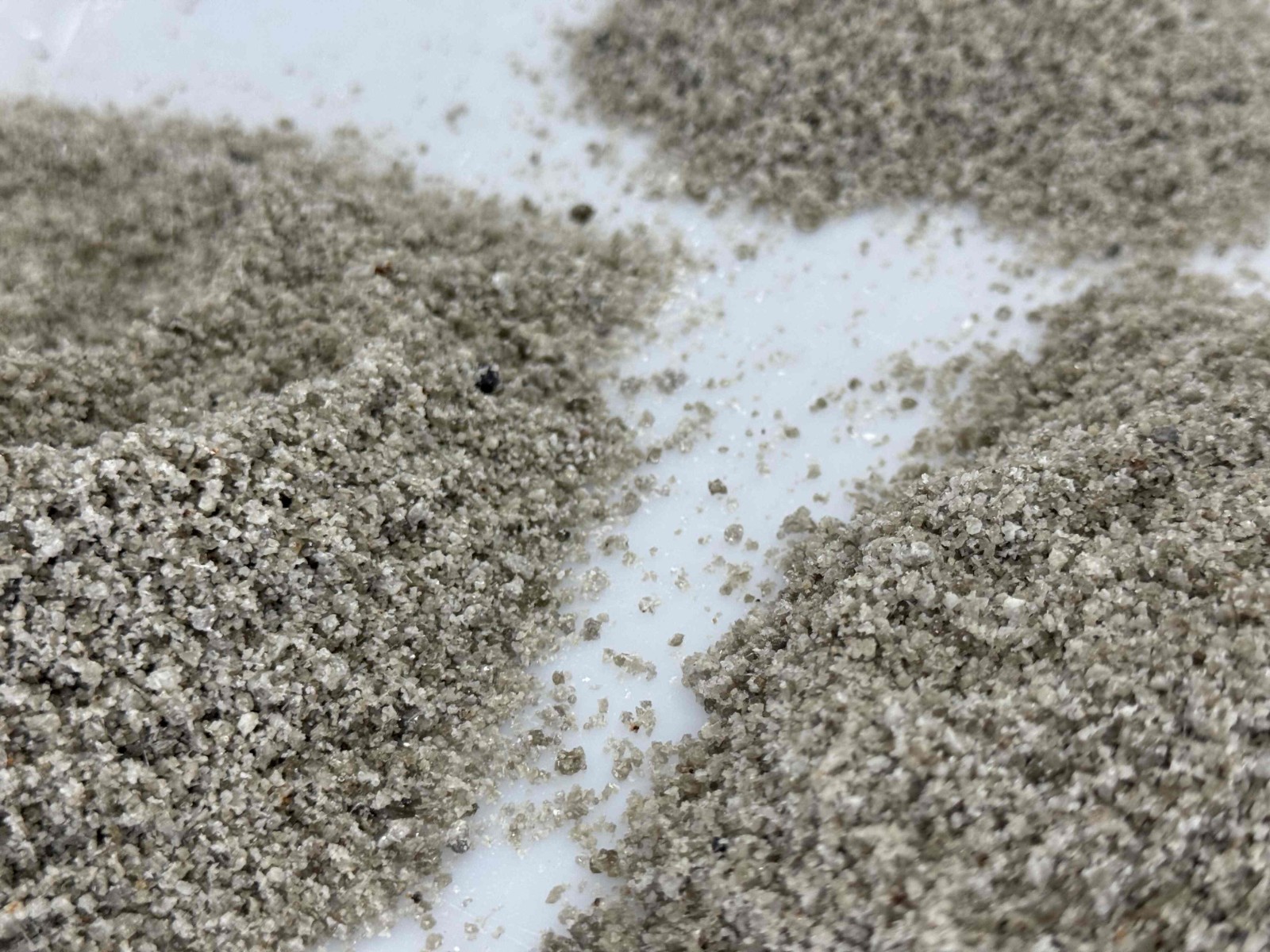GBFS, a kind of industrial waste slag generated in the process of blast furnace ironmaking, with calcium silicate-aluminate as its main constituent, is quenched and treated with water to form granules with potential water-hardening and cementing properties. It is widely used in cement production, concrete preparation and wall material manufacturing. Similarly, fly ash, an industrial waste material produced from the combustion of pulverized coal in coal-fired power plants, is mainly composed of vitreous with volcanic ash properties and is likewise used as a raw material for cement and concrete.
In the ironmaking process, iron oxide is reduced to metallic iron at high temperature, and SiO2, A12O3 and other impurities in the ore and lime are synthesized into slag, so that it can be separated from the molten iron, and these molten slag is cooled rapidly to form granulated blast furnace slag.
When slag is finely ground and its specific surface area reaches more than 400m²/kg, it can show good water-hardening and cementing properties. And slag powder and fly ash are also rich in calcium silicate and calcium silica-aluminate, which can promote the hardening process by chelating water molecules to form crystals. When granulated blast furnace slag powder is blended into cement, the slag silicate cement formed.Due to insufficient fineness or high iron content,it may lead to water secretion phenomenon in the concrete mix.At the same time, because of the higher content of calcium silica-aluminate, its hydration reaction is more rapid, which is different compared with silicate cement. Granulated blast furnace slag has a predominantly vitreous structure, with a vitreous body of more than 85%. Therefore, it has high activity.
1.Differences between granulated blast furnace slag and fly ash, silica fume and other volcanic ash materials
The difference between GBFS and volcanic ash materials such as fly ash and silica fume is that volcanic ash materials do not have gelling properties, while slag has gelling properties. Volcanic ash material will not hydrate when mixed with water to form hydration products, it must react with Ca(OH)2 to form hydration products. Slag, on the other hand, can react with water to form hydration products, except that finely ground granulated slag reacts very slowly when mixed with water alone. When there is the presence of exciters, it can give full play to this kind of gelatinization. Commonly used exciters have two types: one is alkaline exciters; the other is sulfate exciters. Under the action of these exciters, slag can be hydrated faster, forming hydration products.
Another important difference between GBF and fly ash and silica fume is that granulated blast furnace slag needs to go through a milling process to grind it into a fine powder before it can be used as a mineral admixture in concrete. During the milling process, the slag particles will be broken into irregular forms. Due to the poor form effect of such particles, they do not contribute to the fluidity of concrete. Therefore, finely ground slag generally does not have a water-reducing effect. In addition, the water retention of finely ground slag is poor, and it is easier to secrete water after mixing with finely ground slag.

2.What are the requirements for the quality of granulated blast furnace slag powder in national standards?
China's national standard GB/T 18046-2000 "Ground Granulated Blast Furnace Slag Used for Cement and Concrete" specifies six key performance indicators for GBFS:
Density
Specific surface area
Activity index
Fluidity ratio
Moisture content
Loss on ignition
The standard classifies GBFS into three grades (S105, S95, S75) based on performance. While the requirements for density, specific surface area, moisture content, and loss on ignition are identical across all grades, the distinctions lie in:
Activity index (7-day/28-day)
Fluidity ratio
Table 1 presents the GB/T 18046-2000 requirements for GBFS grading:
| Grade | Activity Index (7d/28d) | Fluidity Ratio |
|---|---|---|
| S105 | ≥95% / ≥105% | ≥85% |
| S95 | ≥75% / ≥95% | ≥90% |
| S75 | ≥55% / ≥75% | ≥95% |
Note:
Higher-grade GBFS (e.g., S105) demands elevated activity indices but tolerates lower fluidity ratios, potentially increasing water demand in concrete mixtures.
Key technical approach to enhance activity involves finer grinding, which improves reactivity but compromises flowability (higher water requirement).
Economic and technical trade-offs between fineness optimization and workability preservation require thorough evaluation.
3.Application of Granulated Blast Furnace Slag in Construction Field
In the field of construction, granulated blast furnace slag, as a high-quality cement admixture, can effectively improve the strength, impermeability and durability of concrete. Through reasonable admixture of granulated blast furnace slag, high-performance concrete with excellent performance and low cost can be prepared to meet the high requirements of modern construction projects on material performance. In addition, granulated blast furnace slag can also be used to prepare slag bricks, slag blocks and other new wall materials, which not only have good mechanical properties, but also have excellent thermal insulation properties, which helps to achieve the goal of energy saving and emission reduction in construction.